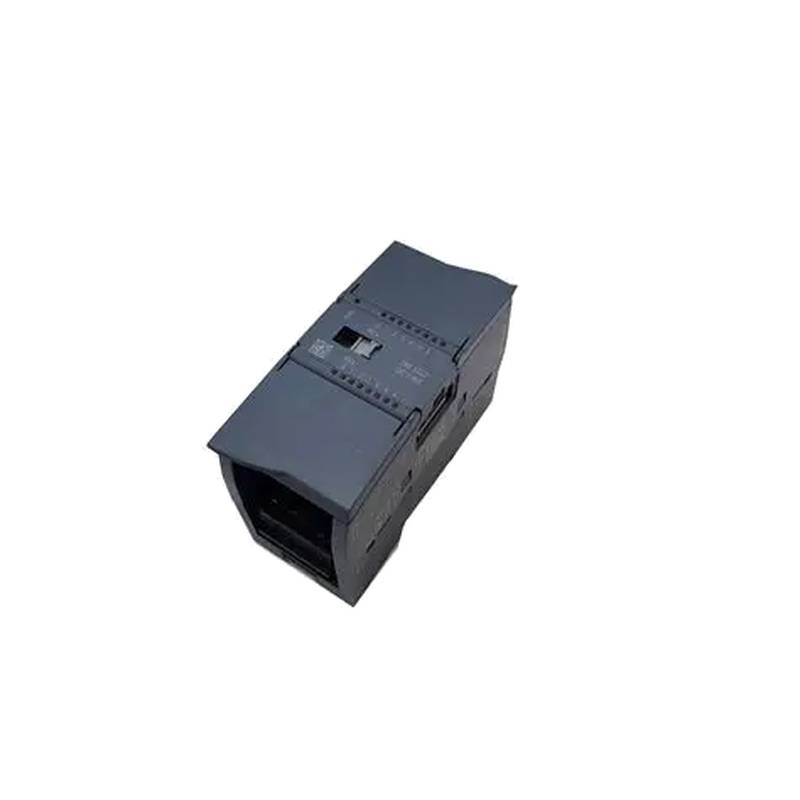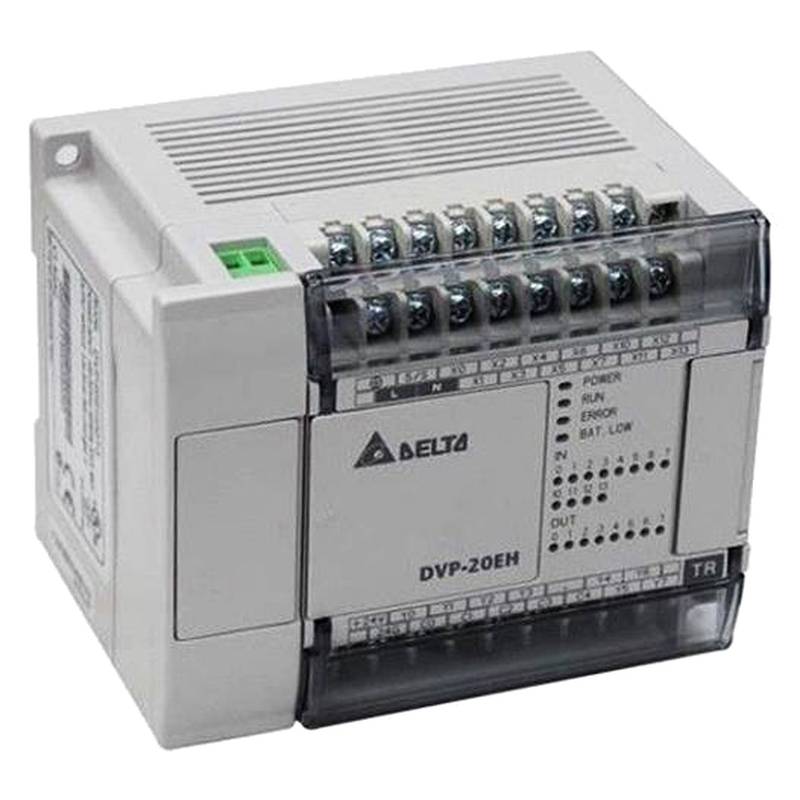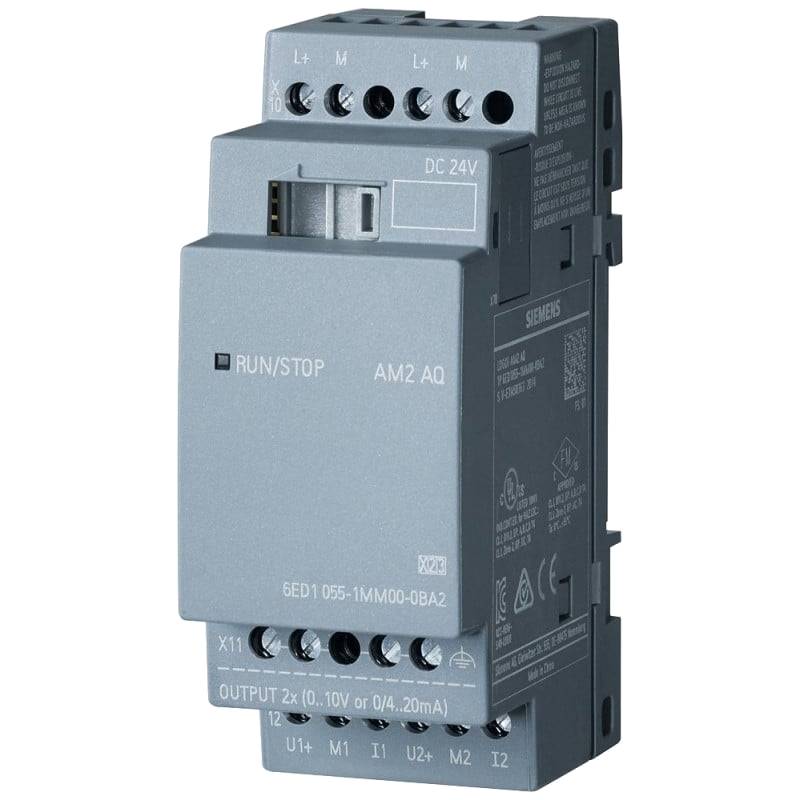
The Siemens 6ES7222-1BH32-1XB0 is a high-performance 16-point transistor pulse output module designed for demanding automation tasks. It offers superior speed, precision, and reliability, making it an indispensable component in modern industrial control systems. Key advantages include its rapid response time, high switching frequency, and robust design for harsh environments. This module is a critical enabler for applications requiring precise motion control, high-speed counting, and rapid signal processing.
Product Specifications
| Feature | Specification |
| :----------------------- | :-------------------------------------------- |
| Module Type | Digital Output Module |
| Number of Outputs | 16 |
| Output Type | Transistor Pulse Output |
| Voltage | 24 V DC |
| Current per Channel | 0.5 A |
| Max. Switching Frequency | 100 kHz (for pulse outputs) |
| Isolation | Channel-to-logic, backplane-to-logic |
| Bus System | SIMATIC S7-1200 |
| Dimensions (W x H x D) | 45 mm x 100 mm x 35 mm |
| Operating Temperature | -20 °C to +60 °C |
Core Features & Market Positioning
The Siemens 6ES7222-1BH32-1XB0 distinguishes itself through its exceptional pulse output capabilities, enabling high-speed control critical for servo drives, stepper motors, and precise positioning systems. Its transistor output stage provides a clean, fast switching action with low power dissipation, ideal for energy-efficient designs and extended operational life. Positioned within the SIMATIC S7-1200 family, it seamlessly integrates with other Siemens automation components, offering a cohesive and powerful solution for small to medium-scale automation projects where precision and speed are paramount. This module's robustness and adherence to Siemens' stringent quality standards underscore its market appeal for applications demanding high reliability in challenging industrial settings.
Key Application Scenarios
This module excels in applications demanding high-frequency signal generation and precise timing. It is widely employed in high-speed packaging machinery, automated assembly lines, and complex material handling systems where precise control of actuators and motors is essential. Furthermore, its suitability for pulse width modulation (PWM) makes it ideal for applications like precise temperature regulation or smooth motor speed control. Users frequently search for solutions in applications involving CNC machines, robotic arm control, and automated test equipment that rely on rapid and accurate digital signal output.
Practical System Integration Guidance
Integrating the Siemens 6ES7222-1BH32-1XB0 into a SIMATIC S7-1200 system is straightforward. The module snaps onto the standard S7-1200 DIN rail and connects via the integrated backplane bus. For pulse output applications, users typically connect the outputs directly to the control inputs of servo drives, stepper motor controllers, or other frequency-sensitive devices. Programming in STEP 7 (TIA Portal) involves configuring the digital outputs as pulse outputs and utilizing specific function blocks for pulse train generation, such as PTO (Pulse Train Output) instructions, to achieve desired motion profiles or control signals. Ensuring correct wiring, including proper grounding and voltage supply, is critical for optimal performance and signal integrity.
Operation and Risk Mitigation
Operating the 6ES7222-1BH32-1XB0 module requires adherence to specified voltage and current limits to prevent damage and ensure longevity. Users should always consult the product manual for detailed wiring diagrams and safety precautions. Common troubleshooting may involve checking power supply stability, verifying output load compatibility, and ensuring proper programming logic. Fault indication is typically managed through the diagnostic LEDs on the module and integrated within the TIA Portal software, allowing for swift identification of issues such as overloads or short circuits. Implementing robust error handling routines in the PLC program is a proactive measure to mitigate operational risks.
Scalability & Long-Term Value
The Siemens 6ES7222-1BH32-1XB0 offers excellent scalability within the SIMATIC S7-1200 platform. Additional I/O modules can be easily added to expand system capabilities as automation needs grow, maintaining a consistent programming environment. Its compatibility with advanced Siemens industrial communication protocols facilitates integration into larger networked systems and Industry 4.0 initiatives, enabling data acquisition and remote monitoring. This ensures long-term value by providing a flexible and future-proof automation solution that can adapt to evolving production requirements and leverage the benefits of digitalization.
Frequently Asked Questions
What is the maximum switching frequency of the Siemens 6ES7222-1BH32-1XB0?
The module supports a maximum switching frequency of 100 kHz for its pulse output functions. This allows for very rapid signal generation required by high-performance control applications.
This high speed is crucial for precise control of servo motors and stepper motors in automation. It ensures accurate positioning and smooth motion profiles.
Applications like high-speed packaging or complex assembly benefit from this capability. It enables faster cycle times and increased throughput.
How do I wire the Siemens 6ES7222-1BH32-1XB0 for pulse output?
Connect the 24 V DC supply to the module's power terminals. Wire the outputs (Q0.0 to Q3.3) to the control inputs of your target devices, such as drives or controllers.
Ensure proper grounding and adherence to current/voltage ratings for connected devices. Consult the manual for specific terminal assignments and recommended cable types.
For optimal signal integrity, use shielded cables, especially in noisy environments. Double-check all connections before powering up the system.
What programming functions are used with the 6ES7222-1BH32-1XB0 for pulse generation?
The TIA Portal software provides specific function blocks for pulse train output (PTO). These blocks allow for configuring pulse frequency, duty cycle, and pulse count.
Commonly used instructions include PTO functions for generating controlled pulse trains. These enable precise speed and position control for motors.
Users can also implement custom logic for more complex signal patterns or event-driven pulse generation. This offers flexibility for diverse application requirements.
























